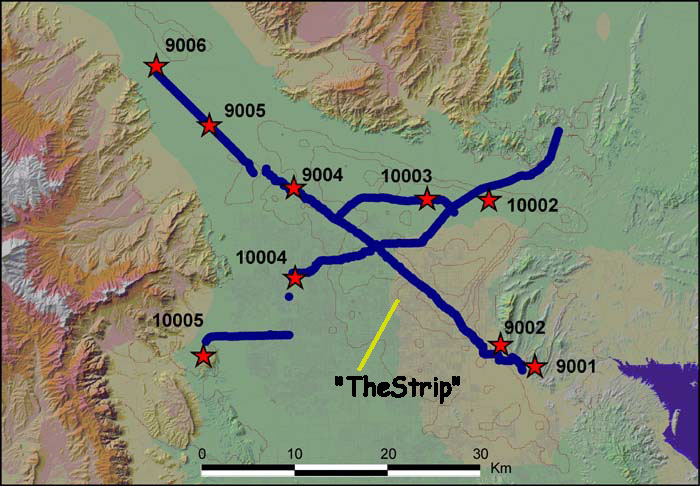SILVVER 2003:
Seismic Investigation of Las Vegas Valley: Evaluating Risks
Jornada shot recorded at Squires Park, Las Vegas, NV
| Regional Map | Purpose | Contact Info | Acknowledgments |
| Background | Methods | Press Release | Results and Models |
Background
These data also show that the basin has varying amplification factors and the potential to focus energy with strong ground shaking (Figure 1) (Su et al., 1998). The strong ground shaking causes the majority of damage during an earthquake, so it is imperative to understand how the Las Vegas basin will respond to such motion. The potential to have earthquakes occurring within the basin as well as strong ground shaking from a distant earthquake (<200 km epicentral distance) increases seismic risk potential to the city of Las Vegas. This risk is much higher than previous estimates.
Acquiring additional geophysical data within the valley will provide
answers to key questions such as why there is such a variability in amplification
across the basin and define any new structures such as sub-basins within
the valley, which may focus energy.
Purpose
Updated SILVVER Map
Updated map of the SILVVER '03 showing deployment of Texan as well as Shot point locations. Blue line represents the deplyments locations of the Texans. The red stars represent the shot point locations.
The experiment was conducted over a 4 day period whereby the seismic instruments werel deployed around the area with the help of many volunteers from the community. Controlled explosions were set off sometime after midnight on the 12th of August. In all 9 shots were detonated at approxiamately 10 minuet intervals.




